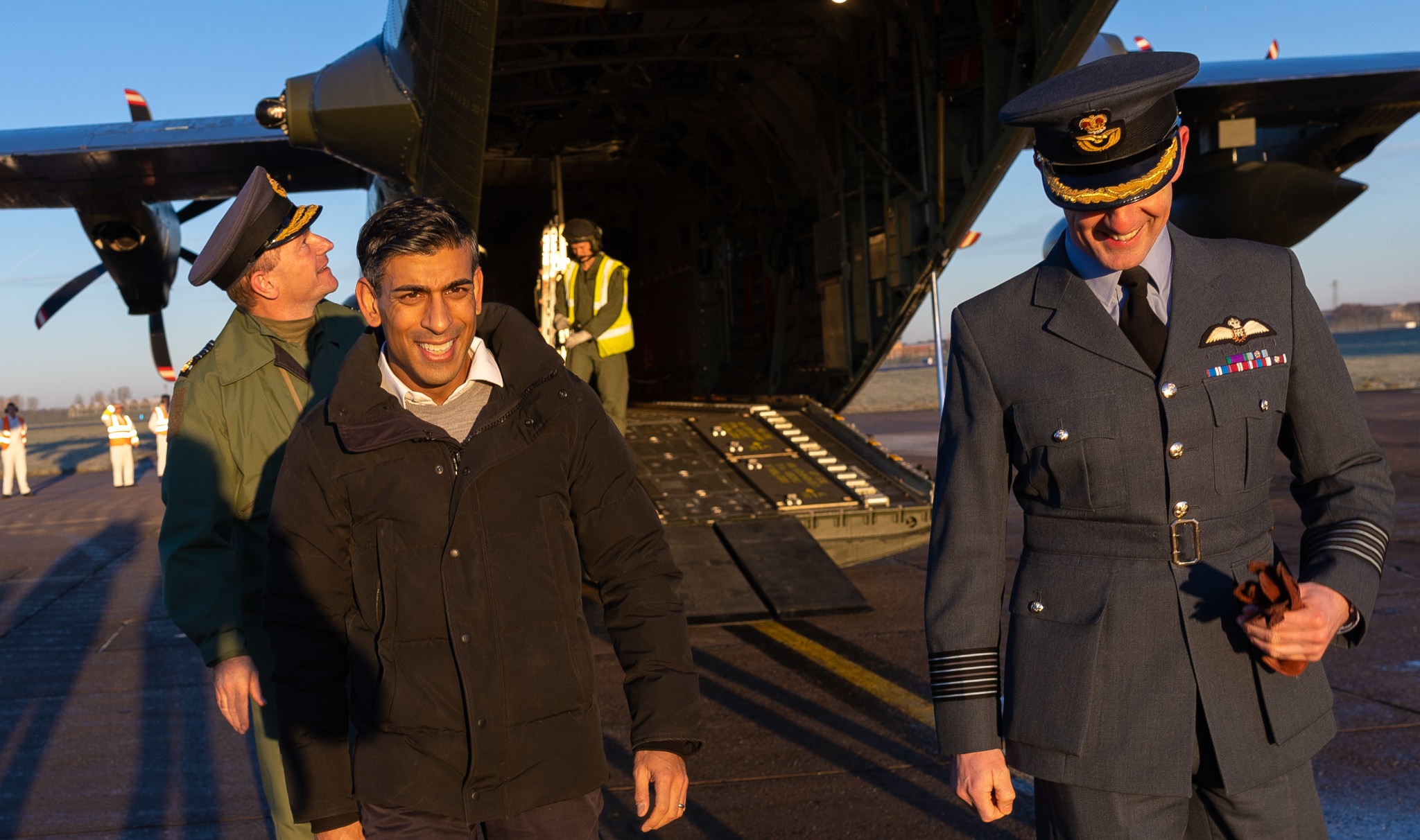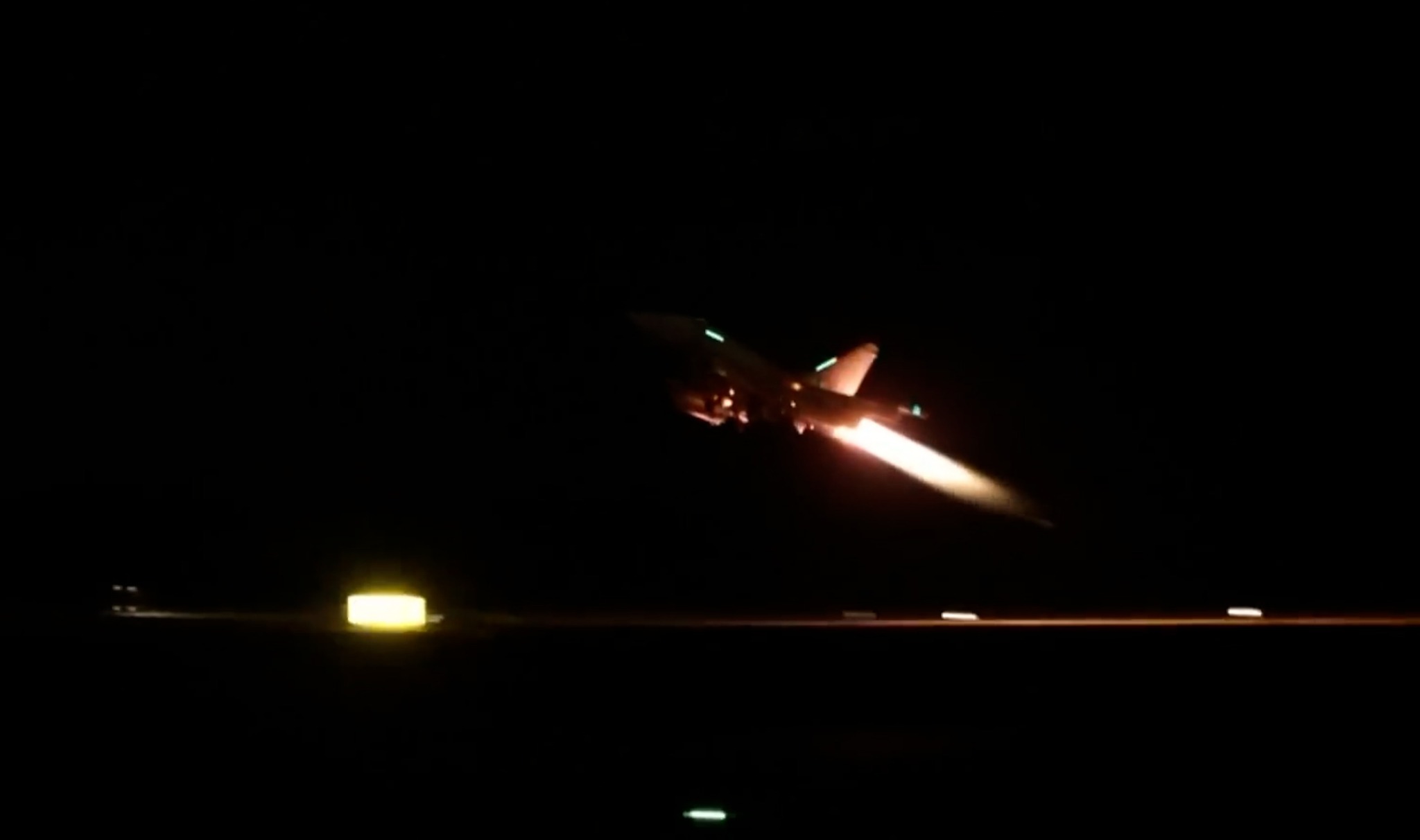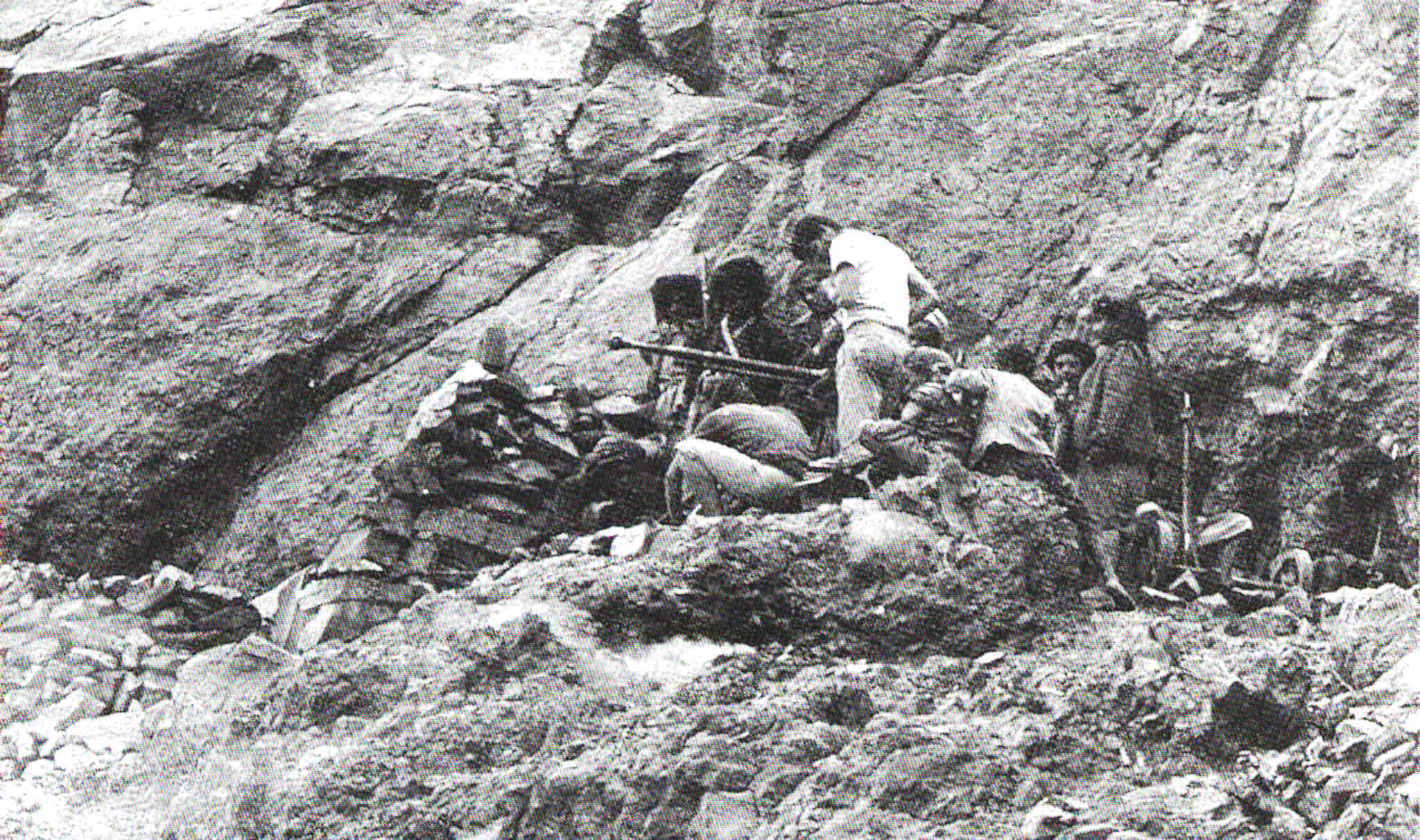The Royal Air Force has bombed Yemen in 15 out of the last 100 years, research by Declassified has found. Nine different prime ministers were in office during these aerial attacks, from both Conservative and Labour.
The figure does not include the period 2015-2022, in which RAF ground crew were embedded within Saudi Arabia’s air force. Then they struck hospitals, funerals and food supplies across Yemen, causing the world’s worst humanitarian crisis.
If that episode were included, the number of British premiers implicated in bombing Yemen would rise to twelve. Downing Street was occupied by David Cameron, Theresa May and Boris Johnson during the period.
While most of the bombing campaigns have long been forgotten in Britain, they are remembered by many Yemenis, whose de facto Houthi government has vowed to resist the latest onslaught.
Historically, the aerial attacks were so frequent that the Ministry of Defence and RAF museum have been unable to provide Declassified with an official list of all years British pilots have bombed Yemen.
Imperial outpost
British gunboats seized the port of Aden in 1839 and gradually extended their occupation over the south of Yemen, to form a colony called the Aden Protectorate.
Yemen’s northern region was under Ottoman rule until the end of World War I when local Muslim royalty formed an Imamate. Their Imams would feature both as enemies and allies of Britain, and are the ideological ancestors of today’s Houthi movement.
With the creation of the RAF in 1918, imperial “air policing” saw British planes bomb and strafe rebellious Yemenis, often for the most minor infractions.
By 1960, a concerned Foreign Officer staffer tried to warn the military that “the bombing of Arab tribesmen arouses considerable emotion in the Arab world which is not similarly aroused by ground operations.”
Air strikes were so routine that in many cases they would not have needed the prime minister’s direct approval. Such suppression took place every decade from the 1920s to the sixties and only paused once Britain finally left Aden in 1967.
1. Stanley Baldwin, Conservative: 1928-29
Tory PM Stanley Baldwin appears to have been the first British premier to let the RAF bomb Yemen. In February 1928, they targeted troops from the Imam of Yemen who had moved over the border of the Aden Protectorate into Dhala.
Months later, in June 1928, “the RAF attacked targets on both sides of the border” around Dali, wrote historian John Newsinger. “They dropped 70 tons of bombs, 1,200 incendiaries and fired 33,000 machine gun rounds—much of it aimed at towns and villages, killing dozens of people.”
And then from January-March 1929, Britain’s High Commissioner in Aden sanctioned the use of force against the Subehis tribe who threatened overland trade routes. An RAF report would later note: “One month of (air) punishment…made them ready to accept the British terms.”
2. Ramsay MacDonald, National Labour: 1934
A founder of the Labour Party, MacDonald was not immune from administering colonial air policing in Yemen. Towards the end of his tenure, “over a period of a week in March 1934, the Queteibis tribe were punished by RAF attacks that saw more than 28 tons of bombs dropped on them,” Newsinger recalls. “British aircraft were dropping an average of 166 bombs an hour on wholly defenceless people.”
More died from stumbling across unexploded ordnance. Air dropped leaflets said: “Keep away from your homes and fields and do not touch any bombs…Those who have been hurt have disobeyed and their deaths are their own fault.” The RAF isolated the Queteibis from any outside contact for two months until they submitted.
3. Clement Attlee, Labour: 1947-49
The RAF’s next bombardment of Yemen also came under a supposedly progressive Labour prime minister, Clement Attlee. In February 1947, Yemenis rose up in Dhala, north of Aden. Their fort, 7,000 feet above sea level on Jabal Jihaf, was bombed by Mosquito planes from RAF 8 Squadron that fired 60-pound rockets.
Next the squadron destroyed the nearby village of Al Husein. British officials regarded that attack as “awe inspiring” and it “undoubtedly made an impression not easily forgotten.” A few months later, they hit the Queteibis at Thumier, dropping 67 tons of bombs and firing 247 rockets.
Such attacks continued into 1948. For three days that October, the same squadron fired 468 rockets, destroying or damaging 15 of a tribe’s 16 forts. Another air raid was conducted in April 1949 “against a rebel stronghold near the Yemen border”, according to a RAND Corporation report.
4. Winston Churchill, Conservative: 1954-55
Churchill is known for using the RAF to suppress colonial uprisings and Yemen was no exception. Between 1954-55, aircraft strafed the Shamsi tribe who successfully dislodged imperial troops from a fort at Robat in Wadi Hatib. Some of the planes involved came straight from bombing anti-colonial ‘Mau Mau’ rebels in Kenya.
By now, the unrest in Yemen was being blamed on Egypt’s revolutionary president Gamal Abdel Nasser. His independent foreign policy in a region where Britain’s oil supply originated became intolerable for Whitehall. Nasser’s Egypt functioned as a bogeyman for British politicians and arms industry in much the same way Iran does today.
5. Anthony Eden, Conservative: 1955-57
By the mid-1950s, the RAF base at Khormaksar in Aden was its busiest air station in the world. With Eden losing the Suez Canal to Nasser, British war planes continued to attack tribes across Yemen, fearing unrest would spread. Around the time Eden was leaving Downing Street in early 1957, a top secret report by the Chiefs of Staff noted “action has recently been taken by British…aircraft to clear two villages in Beihan”.
6. Harold Macmillan, Conservative: 1957-58
Shortly after Macmillan took office, his military top brass including the Queen’s cousin, Earl Mountbatten of Burma, were prepared for more attacks in Yemen. They recommended the Governor of Aden be “empowered” to authorise air strikes with “rockets and cannon fire”.
Yemenis continued to resist British occupation of their land and in early 1957 RAF Shackletons were bombing “dissidents”. Further air raids were staged in mid-1957, prompting a question in parliament. Such sorties appear to have rolled over into 1958, when in July an RAF Venom was shot down near Harib, killing the pilot.
7. Alec Douglas-Home, Conservative: 1964
One of the most significant uprisings against British rule in Aden began in January 1964 when a rebellion broke out in Radfan, a mountainous area about 50 miles away from the port. In response, Operation Nutcracker saw the RAF fly 600 sorties over Radfan, firing 2,500 rockets and 200,000 cannon rounds.
Historian Mark Curtis wrote: “In one attack, a single Shackleton bomber expended 600 20mm cannon rounds and dropped 60 aerial grenades. The pilot reported firing his cannon at a herd of goats while dropping six aerial grenades on another goat herd, 11 on cattle, eight on ‘people’—without specifying civilian or combatant— and an additional 14 on ‘people under trees.’
“There were no restrictions on using 20lb ‘anti personnel bombs’ – similar to what are now called cluster bombs – although ‘the public relations aspect’ of these ‘will want very careful handling’, the Ministry of Defence noted.”
8. Harold Wilson, Labour: 1964-66
The revolt in Radfan had largely been suppressed by the time Wilson took office in October 1964, but the RAF would continue to be engaged there until 1966. The city of Aden itself became the centre of turmoil for the Labour government. That ‘emergency’ would largely be dealt with by the army, who interrogated Yemenis at Fort Morbut, known locally as the “fingernail factory”.
Meanwhile the RAF found a role in north Yemen, where the Imam had been overthrown in a revolution backed by Egypt. MI6 decided to covertly support its old foe, hiring SAS veterans to fight alongside the Imam’s troops during the mid-1960s.
Historian Stephen Dorril notes the RAF undertook secret bombing in retaliation for Egyptian attacks on camel trains supplying weapons to French and British mercenaries. The number of those who died in north Yemen’s civil war was never accurately established, but may have been as many as 200,000.
9. Rishi Sunak, Conservative – 2024
Yemen’s Houthi movement, which traces its lineage back to the Imamate, survived an onslaught of UK-backed Saudi airstrikes from 2015 to 2022. That coalition failed to oust it from Yemen’s capital, Sanaa. Late last year in response to the Gaza genocide, the Houthis began to target Israeli-linked shipping in the Red Sea.
Sunak sent a destroyer, HMS Diamond, to patrol the sea lane through which a significant amount of global trade passes. He claims the warship came under attack from Houthi drones on 9 January. Two days later, the RAF sent four Typhoon jets from Cyprus to bomb two locations in Yemen, at Abbs airfield and Bani, destroying 13 targets.
No civilian casualties have been reported, although very poor civilian housing can be seen clustered at the end of Abbs airfield. Sunak claims the strikes were limited, and bizarrely denies any connection with the situation in Gaza.
The Houthis have vowed to continue their shipping blockade. Judging by Downing Street’s track record, Sunak may well launch more airstrikes, even though analysts warn they could fuel further conflict and unite Yemenis around the Houthi movement.




